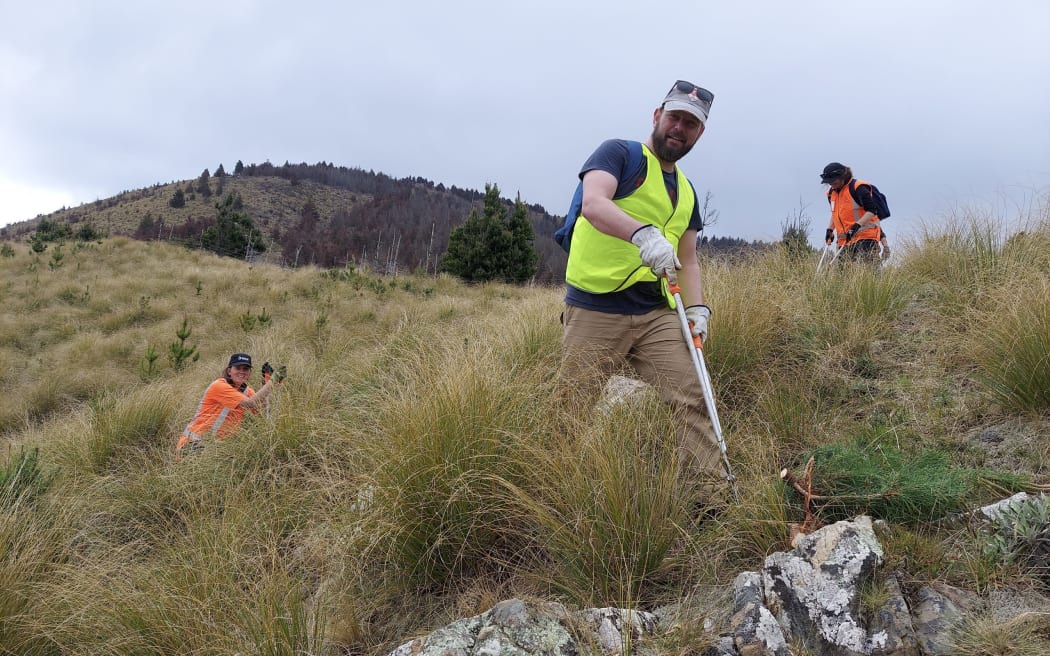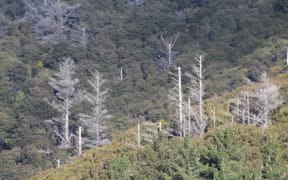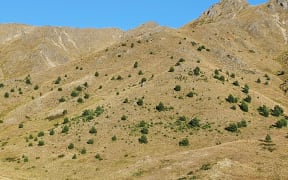
Lending a hand at a Mid Dome volunteer day are Environment Southland biosecurity and biodiversity operations manager Ali Meade (left) and integrated catchment management general manager Paul Hulse (centre). Photo: Environment Southland/Supplied
Work in Southland to target wilding pines has taken a hit on the back of reduced funding from the government.
The issue was highlighted in a recent Environment Southland chief executive report which said the Ministry for Primary Industries had reduced its budget for this year's control programme.
It was unlikely the programme would receive enough to maintain gains made in previous years, it said.
Environment Southland biosecurity and biodiversity operations manager Ali Meade said wilding pine work had been ongoing since at least the 1990s, undertaken by both agencies and private landowners.

"Wilding pines overwhelm our landscapes, killing native plants and forcing out native animals," Meade said.
"This is done by growing densely, using up the sun, water and nutrients other plants need to survive."
Pine seeds could spread up to 40 kilometres in the wind meaning they could increase rapidly across a wide area, she said.
"Without adequate funding, wilding pine control work will go backwards, with cleared land prime for re-infestation and also further expansion across the region."
In Southland, control sites include the Eyre and Takitimu Mountains where private work has been undertaken, and Mid Dome where a trust has coordinated work since 2006.
The Environment Southland report also warned a new species of wilding pine had recently been found in the region - Larch.
Meade said Larch caused issues across many parts of the country, and tended to be an amenity or woodlot planting in Southland.
None had been reported in the region until 23 December 2023, but biosecurity staff had since found three sites, she said.
"The risk is similar to our other wilding species like Pinus contorta and douglas fir as it has a light seed that can travel a long distance."
The first site, in the Te Anau basin, had been addressed.
Environment Southland was now working with landowners at another two sites to remove seedlings.
Biosecurity New Zealand director of readiness and response John Walsh said the National Wilding Conifer Control Programme had received an increase in government funding from 2020 due to a "time-bound" $100 million allocation.
The "front loaded" funding was tapered down to $10 million a year for 2023/24 and beyond, he said.
"This is the first time the programme has had consistent baseline funding."
Since 2016, the government had invested $140 million into wilding control, supported by around $30 million from partners and land owners.
The programme has made significant progress in some of the worst infestations - including at Mid Dome - working alongside Environment Southland and Mid Dome Trust, Walsh said.
The National Wilding Conifer Control Programme had contributed around $12.5 million in control work funding in Southland since 2016, he said.
LDR is local body journalism co-funded by RNZ and NZ On Air.





